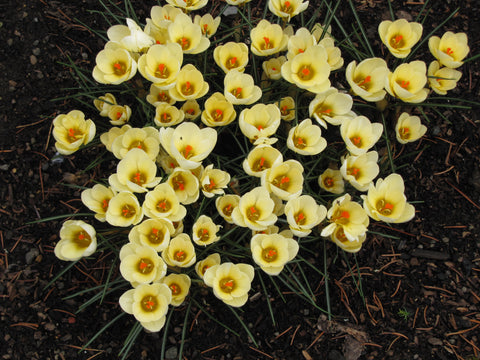Name That Flower! January 31 2015, 0 Comments
As we strive to reconnect children with nature, learning the names of plants can be a valuable first step. It certainly is an excellent measure to fight plant blindness, that malady that hides the marvelous details and identities of plants. All plants that children encounter are good subjects for learning names, whether the plant is a cut flower, a garden vegetable, a wildflower, or a weed.
Spring is coming extra early to the Willamette Valley, and although I realize that is not the case in most of the US, it is never too early to start thinking about spring and the opportunities for botany studies it presents. The crocuses are blooming here, as well as snowdrops and violets. When spring comes to your school, will the children know the names of the flowers that appear?
My “Study Starter Cards for Early Spring Flowers” can help your children start learning about the local flowers in the US, especially in moderate climates. This material is a print-it-yourself file that has half-page sized cards for 20 flowers and four full pages on early blooming trees. The trees are red maple, bigleaf maple, alder, and hazelnut, all of which have inconspicuous flowers. The flowers in this set include bulbs, perennials, and shrubs.
These cards have more than just the common and scientific names of the flowers. That information is enough for beginners, but elementary children are able to learn more. These and older children need names that will open doors to further learning.The cards include the family, order, and major branches of the angiosperms to which the plant belongs.
The major branches of the angiosperms are the magnoliids, the monocots, and the eudicots. The largest branch, the eudicots, has several branches including the asterids and the fabids. The names of these branches are not capitalized, nor do they carry a rank such as order or class. This is the new world of plant classification, the phylogenetic system that is currently used by botanists. With a little practice, it isn’t hard to learn or understand. My book, Kingdoms of Life Connected can help you. In case you are wondering, the former dicots included eudicots and magnoliids, which are two different lineages. "Eudicots" means "the true dicots."
The photo shows crocuses that were blooming in my garden early last March. They are at about the same stage this year at the end of January. Yes, the weather is strange, as usual. Enjoy your early spring plants, whenever they come.

